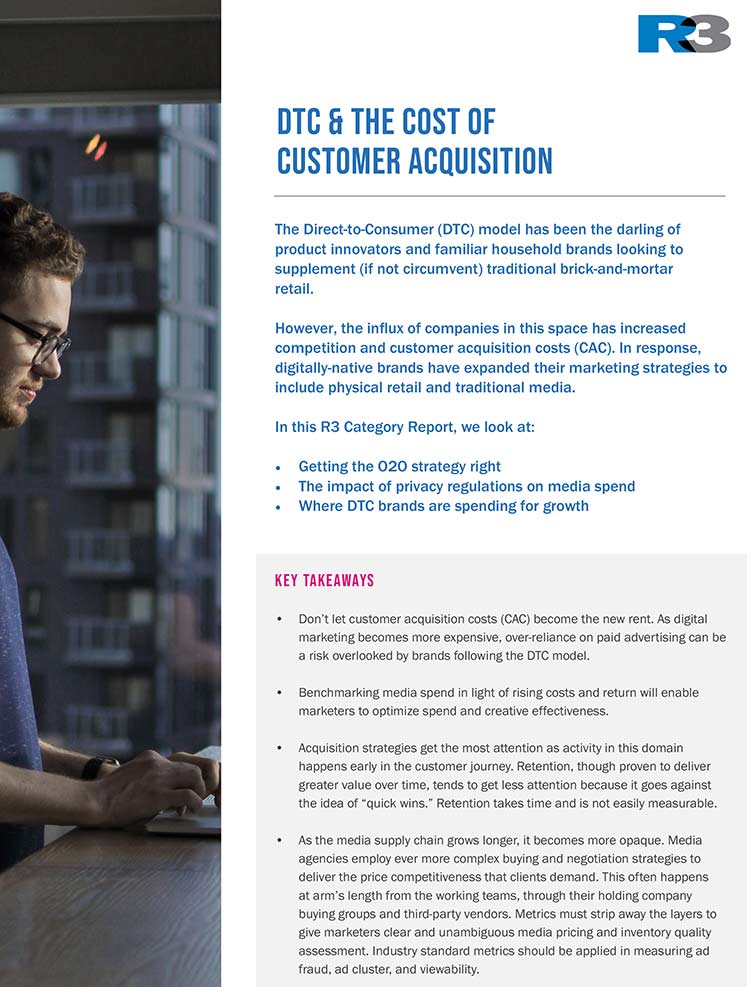The Direct-to-Consumer (DTC) model has been the darling of product innovators and familiar household brands looking to supplement (if not circumvent) traditional brick-and-mortar retail.
However, the influx of companies in this space has increased competition and customer acquisition costs (CAC). In response, digitally-native brands have expanded their marketing strategies to include physical retail and traditional media.
In this R3 Category Report, we look at:
- Getting the O2O strategy right
- The impact of privacy regulations on media spend
- Where DTC brands are spending for growth
Key Takeaways
- Don’t let customer acquisition costs (CAC) become the new rent. As digital marketing becomes more expensive, over-reliance on paid advertising can be a risk overlooked by brands following the DTC model.
- Benchmarking media spend in light of rising costs and return will enable marketers to optimize spend and creative effectiveness.
- Acquisition strategies get the most attention as activity in this domain happens early in the customer journey. Retention, though proven to deliver greater value over time, tends to get less attention because it goes against the idea of “quick wins.” Retention takes time and is not easily measurable.
- As the media supply chain grows longer, it becomes more opaque. Media agencies employ ever more complex buying and negotiation strategies to deliver the price competitiveness that clients demand. This often happens at arm’s length from the working teams, through their holding company buying groups and third-party vendors. Metrics must strip away the layers to give marketers clear and unambiguous media pricing and inventory quality assessment. Industry standard metrics should be applied in measuring ad fraud, ad cluster, and viewability.

